| Eucarta | |
|---|---|
 | |
| Scientific classification | |
| Kingdom: | |
| Phylum: | |
| Class: | |
| Order: | |
| Family: | |
| Genus: | Eucarta Lederer, 1857 |
Eucarta is a genus of moths of the family Noctuidae. The genus was erected by Julius Lederer in 1857. [1] [2] [3]
| Eucarta | |
|---|---|
 | |
| Scientific classification | |
| Kingdom: | |
| Phylum: | |
| Class: | |
| Order: | |
| Family: | |
| Genus: | Eucarta Lederer, 1857 |
Eucarta is a genus of moths of the family Noctuidae. The genus was erected by Julius Lederer in 1857. [1] [2] [3]
Adrapsoides was a genus of moths of the family Noctuidae described by Shōnen Matsumura in 1925. It is considered by The Global Lepidoptera Names Index and Butterflies and Moths of the World to be a synonym of Polypogon. It is considered by Lepidoptera and Some Other Life Forms to be a synonym of Zanclognatha.
Cleptomita was a genus of moths of the family Noctuidae first described by Augustus Radcliffe Grote in 1873.

Yigoga is a genus of moths of the family Noctuidae, it was placed as a synonym of Dichagyris by Lafontain & Fibiger in 2003.

Zanclognatha is a genus of litter moths of the family Erebidae. The genus was erected by Julius Lederer in 1857.
Eccrita is a genus of moths of the family Noctuidae and is in the subfamily of Calpinae. The genus was erected by Julius Lederer in 1857. The genus was considered a synonym of Lygephila by Robert W. Poole, but it was revalidated by Herbert Beck in 1996.
Megachyta was a genus of moths of the family Noctuidae first described by Augustus Radcliffe Grote in 1873.
Mesoplectra was a genus of moths of the family Noctuidae first described by Arthur Gardiner Butler in 1879.
Orthia is a monotypic moth genus of the family Noctuidae. Its only species, Orthia augias, is found in the Brazilian state of Amazonas. Both the genus and species were first described by Gottlieb August Wilhelm Herrich-Schäffer in 1853.
Pityolita was a genus of moths of the family Erebidae first described by Augustus Radcliffe Grote in 1873.
Pristoceraea is a monotypic moth genus of the family Noctuidae described by Ferdinand Karsch in 1895. Its only species, Pristoceraea eriopis, was first described by Gottlieb August Wilhelm Herrich-Schäffer in 1853. It is found on Madagascar.
Tephrochares is a monotypic moth genus of the family Noctuidae described by Zerny in 1955. Its only species, Tephrochares inquinata, was first described by Julius Lederer in 1857. It is found in Lebanon and Sicily.
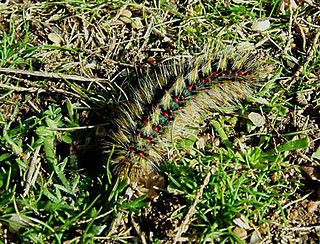
Chondrostega is a genus of moths in the family Lasiocampidae. The genus was erected by Julius Lederer in 1858.
Celonoptera is a monotypic moth genus in the family Geometridae. Its only species, Celonoptera mirificaria, is found in south-eastern Europe. Both the genus and species were first described by Julius Lederer in 1862.

Ematurga is a genus of moths in the family Geometridae erected by Julius Lederer in 1853.

Heterolocha is a genus of moths in the family Geometridae described by Julius Lederer in 1853.
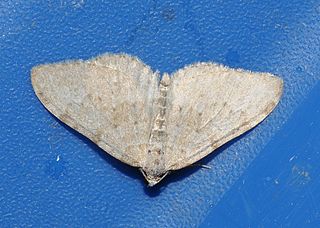
Nebula is a genus of moths in the family Geometridae erected by Charles Théophile Bruand d'Uzelle in 1846.
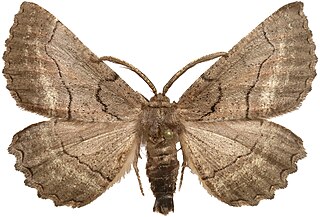
Nychiodes is a genus of moths in the family Geometridae described by Julius Lederer in 1853.
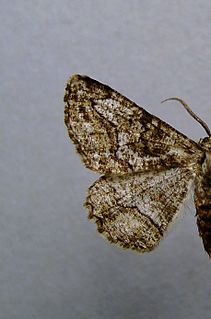
Synopsia is a genus of moths in the family Geometridae erected by Jacob Hübner in 1825.
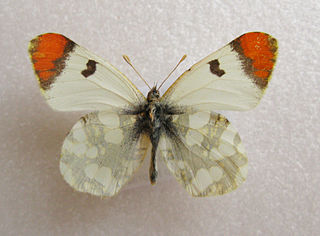
Zegris is a Palearctic genus of butterflies in the family Pieridae. This genus was erected by Jean Baptiste Boisduval in 1836. It is characterized by the very strongly clubbed antennae and the bushy palpi, but especially by the shape of the larva and pupa and the manner of pupation.
Westia is a genus of moths in the family Psychidae. It was described by David Stephen Fletcher in 1982.
| This Amphipyrinae article is a stub. You can help Wikipedia by expanding it. |